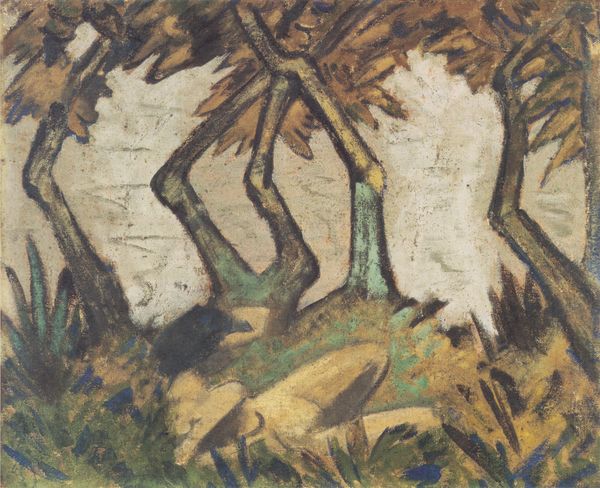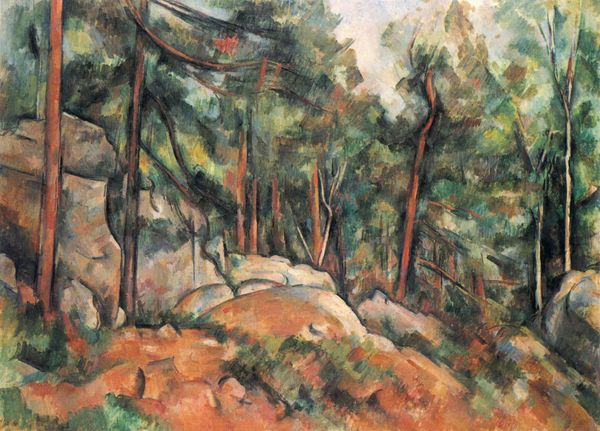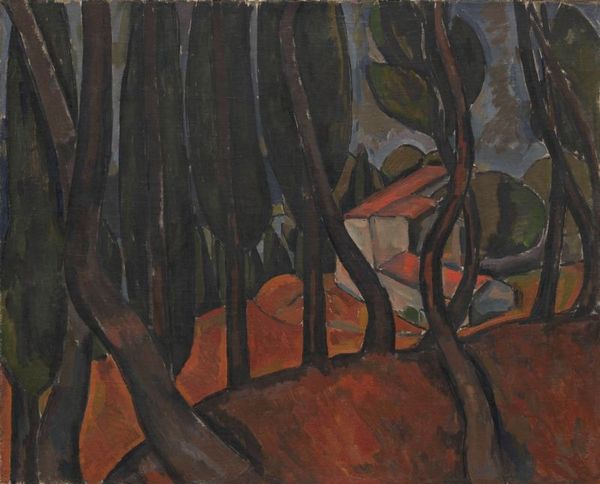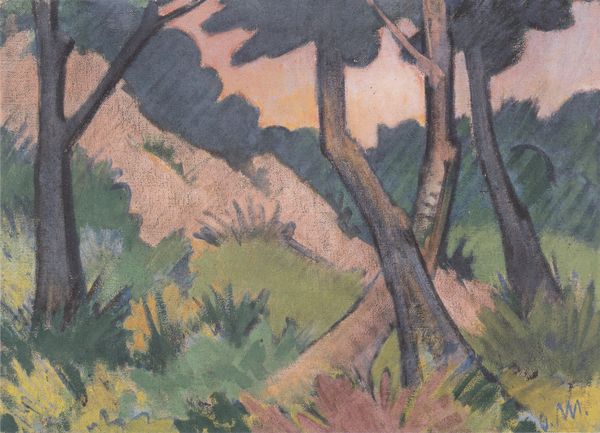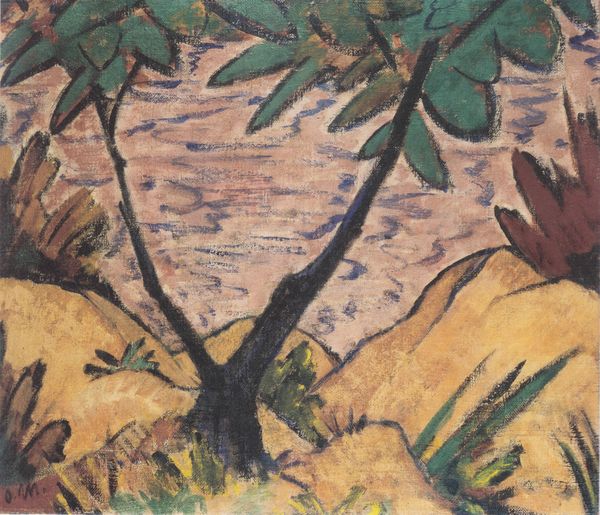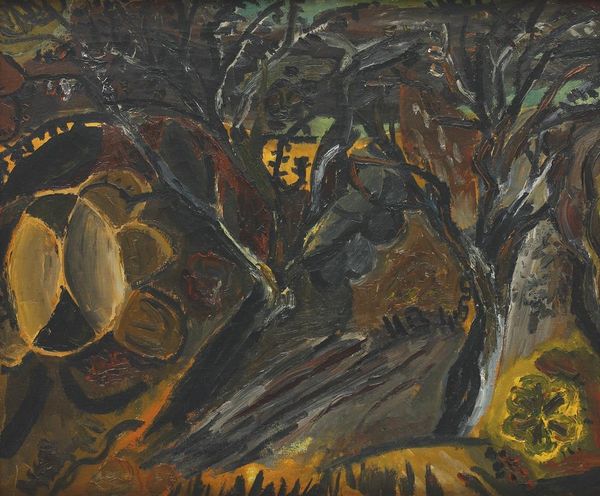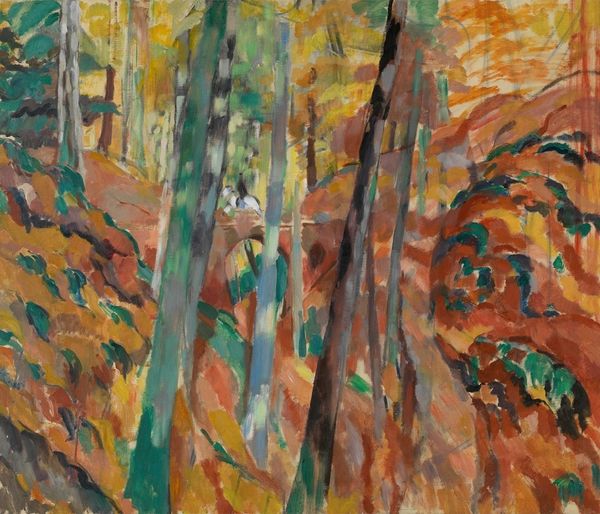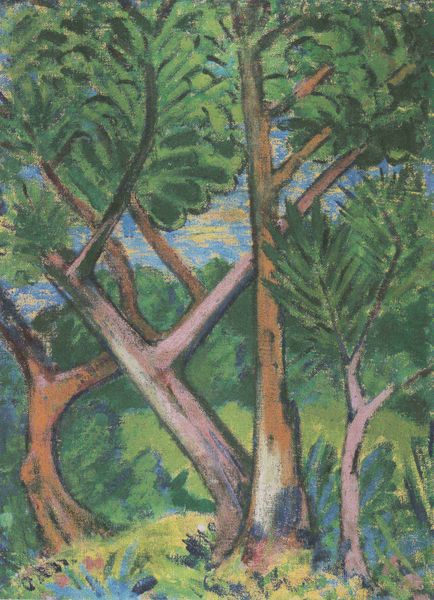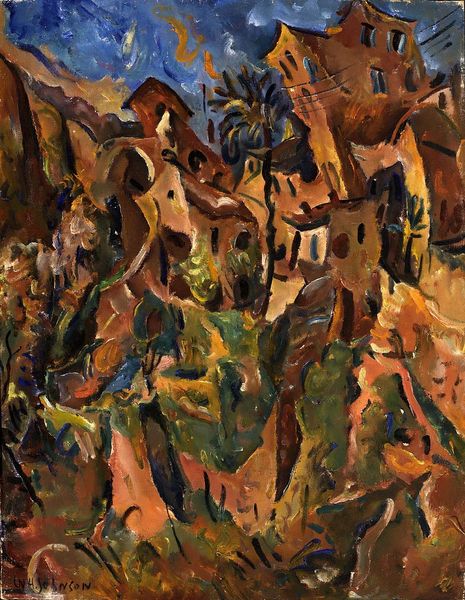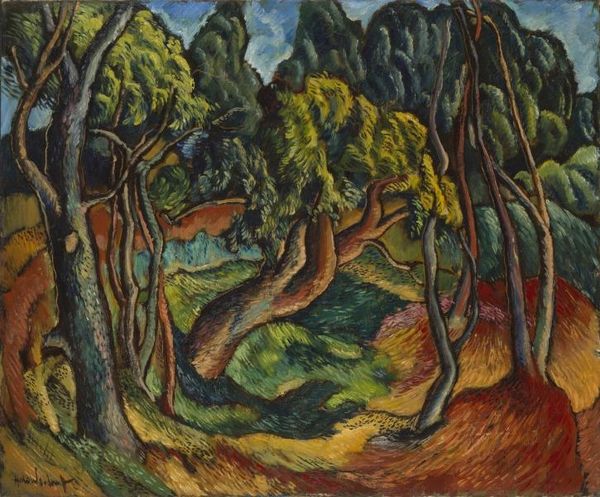
plein-air, oil-paint, canvas
#
plein-air
#
oil-paint
#
landscape
#
german-expressionism
#
figuration
#
oil painting
#
canvas
#
expressionism
#
cityscape
#
expressionist
Dimensions: 90.9 cm (height) x 75 cm (width) x 6.4 cm (depth) (Brutto), 81 cm (height) x 65 cm (width) (Netto)
Othon Friesz made this painting of a winter road, probably in the early 20th century, using oil on canvas. The way he's put the paint down feels so intuitive, almost like he's feeling his way through the scene. Look at the bark on those trees, the way it’s built up with thick strokes of green and brown, like he’s sculpting the surface, not just painting it. There's a real materiality here, a sense of the weight and density of the forest, but also a kind of fluidity, like everything is in motion. Friesz really lets you see the process. And then there's that little figure struggling under a load of sticks—the whole composition feels like a metaphor for the act of carrying, of bearing witness. I see echoes of Cézanne in the way he simplifies and abstracts the forms, but with a kind of raw energy that's all his own. It’s a reminder that art is always a conversation, a back-and-forth between artists across time.
Comments
statensmuseumforkunst almost 2 years ago
⋮
A muted palette of browns and a web of black contours tell us that the structure of the landscape was of particular interest to the artist. Friesz was a close friend of Dufy and Braque, whom he had known since childhood. In 1906 he and Braque discovered Fauvism with its pure colours and broad brushstrokes, and they soon became part of the group. Like many of the other Fauvists, however, he changed course in 1907 and, very much inspired by Cézanne, became interested in planes, volumes, and structure. His work took on a new, more serious aspect. French masters from the past, particularly Nicolas Poussin, also became important sources of inspiration. Friesz’s paintings continue an old tradition while placing new emphasis on an often expressively charged rhythm and structure.
Join the conversation
Join millions of artists and users on Artera today and experience the ultimate creative platform.
